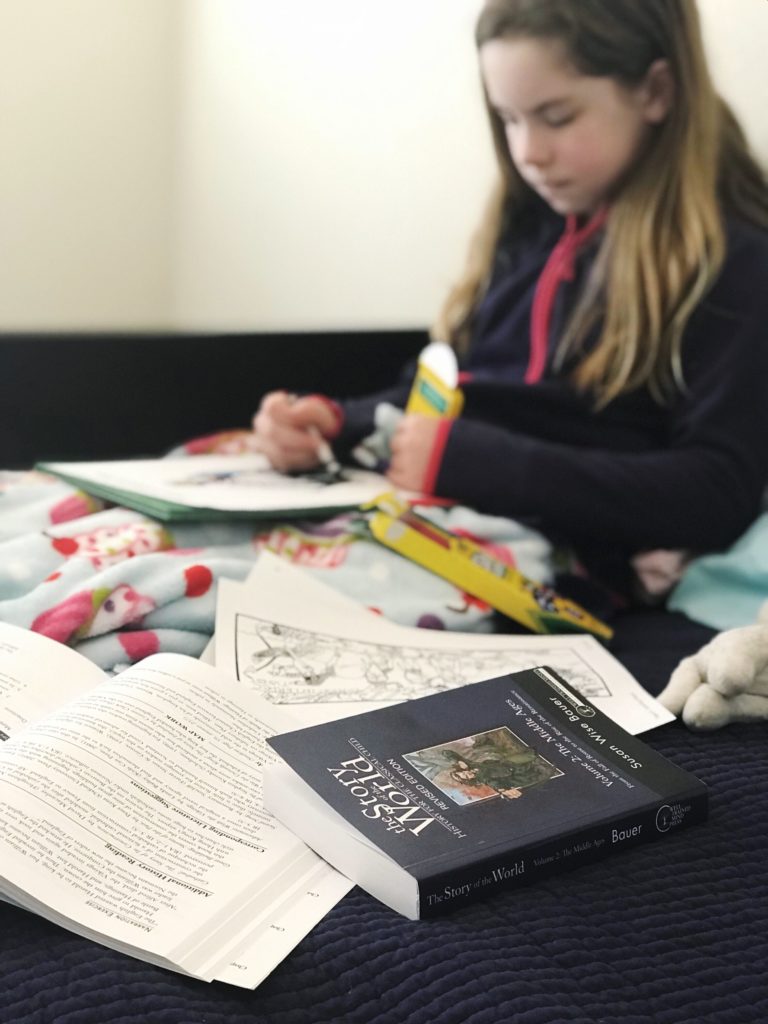Inside the classical method of homeschooling

The classical method is one of the more well-known types of homeschooling. It’s the stereotype people may think of when they first picture homeschooling. The framework is based on literature and language learning focused on teaching children through reading and logical discussion.
The classical method is based off an 18th century upper class education, where literature and classical books were the best reliable knowledge available. Schools back then didn’t have formal standards, so the best education came from reading, and those who had access to literature.
Method description
Classical homeschooling focuses on literature; classics and the so-called Great Books: Tom Sawyer, The Odyssey, Great Expectations, The Great Gatsby, Shakespeare, 20,000 Leagues Under the Sea, Moby Dick, Pride and Prejudice, Don Quixote de la Mancha, Crime and Punishment and Paradise Lost, to name a few.
Great Books are pieces of literature that stand the test of time and demonstrate the best representation of writing and language during the time period when they were written.
This method incorporates learning in what is known as the Classical Trivium: grammar, logic and rhetoric. Students learn facts, data and grammar in elementary school, continue with logic and critical thinking in middle school and in high school they focus on rhetoric and self expression.
Some classical methods even include learning Greek and Latin, although it’s not required. Socratic dialogues are incorporated throughout the curriculum to foster discussion and debate with open ended questions.
Curriculums for the classical method
There are many curriculums available, but usually parent teachers using the classical method adapt several curriculums, structuring them around literature and the specific subject areas they want to teach their child.
“I piece together several different curriculums from different places,” said Trish Lopez, a homeschooling mom. “When I started homeschooling, I tried Abeka, a Bible-based curriculum. I was raised on Abeka, but always hated the math.”
The Abeka curriculum focuses it’s learning in the spiral method, where one subject area is focused on for a certain period of time, but never repeats learned information later on.
Lopez looked for other curriculums that focused on repetition, and “continually practiced learned subjects,” Lopez said. She likes the Saxon math curriculum. “It’s very repetitive, which can be a drawback, but for my children it works better,” she said. Lopez also uses the Shurley curriculum for English.
“Different companies have their own strengths and things they do best,” Lopez said. It’s all about finding what works for you and your children.

Positives
This method places a strong emphasis on reading, and the classical books of literature. It strongly incorporates logic and critical thinking, while also being a rigorous and systematic framework.
The chosen curriculum is adaptable according to the parent teacher’s goals, and there are many different kinds of curriculums to choose from.
“We have loved being able to establish pacing that works best for our children as individuals,” said Nichole Beaudry, a classical homeschooling mom. “If they’re grasping things easily and are eager for more, we can forge forth, capitalizing on their excitement and eagerness. If they’re struggling, we can slow down and help master skills before moving along.”
Negatives
If the student has a weakness in reading, this may not be the ideal method to teach them with. The classical method is inflexible in the methods of learning, so it’s not suitable if a student is having issues in one area, like reading or comprehension.
There is less hands on learning than other methods, and more reading and writing. “Sometimes the curriculum can be a little seatwork intensive,” Lopez said.
“The classical method can feel very prescriptive, and varying from that framework can leave you feeling a bit worried,” said Beaudry. “I have to remember that I don’t have to do ALL the things. I just have to choose what my children need and do my absolute best to provide that.”
Why homeschoolers like it
Classical homeschooling is similar to traditional school, focusing on reading, writing and literature as a bulk of the curriculum. It translates well with children if they’re transitioning in or out of traditional school.
“It’s more important for me that my children acquire knowledge and know what to do with it,” Lopez said. “I want my kids to enjoy learning and think outside the box and not settle for less.”
“One huge plus that the classical method has going for it is the way the classical trivium is perfectly suited for parents who are teaching children at different levels,” said Beaudry. “While my son is solidly in the grammar stage, my daughter is bridging over into the logic stage. Being able to teach them the same subjects while meeting and challenging them individually is both a huge time saver and a great way to deepen their connection with one another through shared experience.”
How the classical method compares
One of the harder things about homeschooling can be having younger children, and teaching them the basics, Lopez said. Once they start reading, it gets easier, but getting to that point can be difficult at some times.
“While we’ve had occasional moments of burnout, I have to say they pass pretty quickly if I mix things up a bit,” said Beaudry. “Remembering that each day is a new opportunity to reset is key!”
